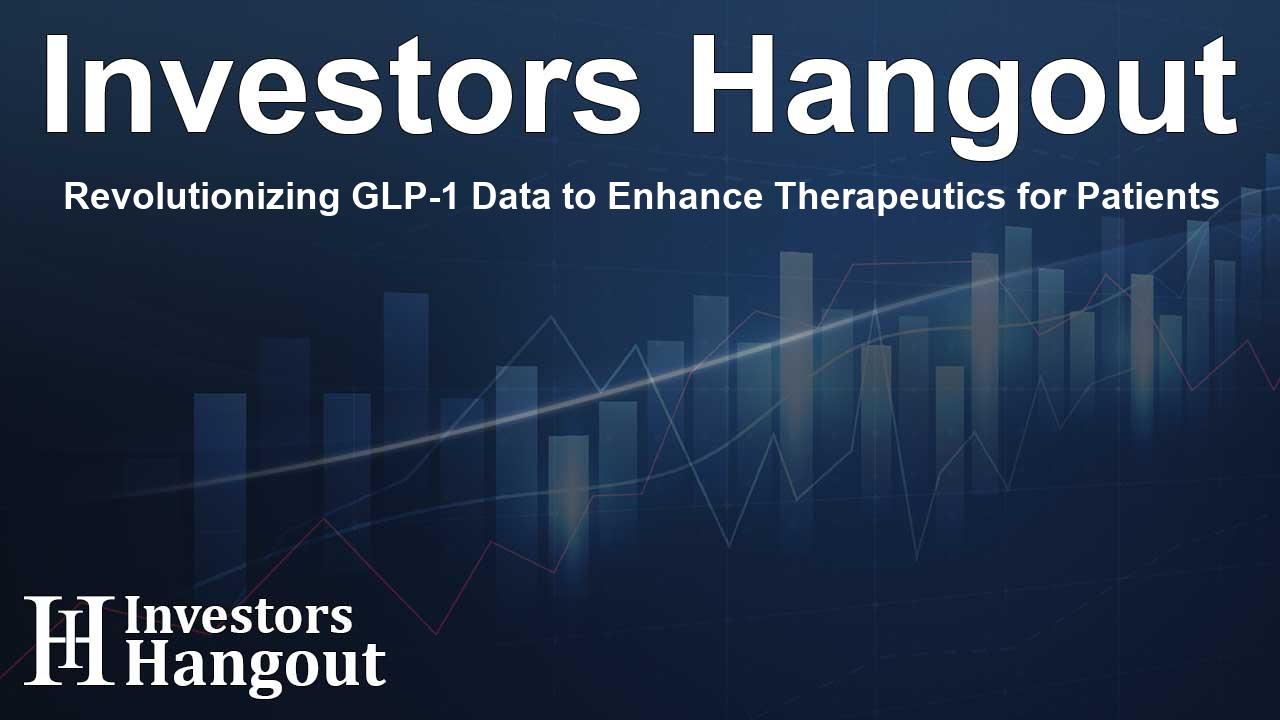Revolutionizing GLP-1 Data to Enhance Therapeutics for Patients

Illumina and Ovation.io Launch Innovative GLP-1 Dataset
Illumina, Inc. (NASDAQ: ILMN) has partnered with Ovation.io to initiate a groundbreaking project that will significantly enhance the understanding of glucagon-like peptide-1 (GLP-1) therapies. This unprecedented collaboration aims to provide the pharmaceutical community with a unique dataset driven by clinical and multiomic insights from 25,000 patients.
Significance of the Collaboration
The dataset being developed represents the largest commercially available clinical multiomic dataset, showcasing integrated information derived from a diverse array of 25,000 individuals treated with GLP-1 receptor agonist therapies. By making this dataset available, both companies intend to push forward the boundaries of drug discovery and development in the therapeutic realm of GLP-1 therapies.
With GLP-1 receptor agonists benefiting approximately one in eight adults who have utilized them, the demand for deeper insights into their effectiveness, especially among those who do not respond well, is critical. Approximately 40% of individuals diagnosed with Type 2 diabetes fail to respond positively to these therapies, underscoring the necessity for continuous research and development.
Objectives of the Integrated Dataset
The collaboration's primary objective is to accelerate the development of GLP-1 therapies and explore new indications. By leveraging the vast dataset, researchers can uncover novel drug targets and biomarkers to assist those who are currently unresponsive to existing GLP-1 therapies. This innovative dataset will help to extend the potential of GLP-1 therapies beyond existing applications, offering hope to many patients.
Importance of Multiomics Data
Todd Christian, the senior vice president of Services, Arrays, and Genomic Access at Illumina, emphasized how crucial multiomic insights are for advancements in metabolic diseases and other health conditions. The invaluable data derived from this collaboration will play a vital role in optimizing therapies that can significantly impact many lives.
The dataset will consist of phenotypic, genomic, and proteomic data capturing both therapy-responsive and nonresponsive populations. Enabling a deeper understanding of molecular pathways related to GLP-1 response can present new opportunities for therapy optimization.
Technology Behind the Dataset
The initiative will utilize Illumina's next-generation sequencing (NGS) technologies and will involve sequencing the whole genomes of 25,000 subjects. It will also include profiling the protein expression from 5,000 samples, employing the Illumina Protein Prep assay for the accurate detection of 9,500 human proteins per sample. Through this project, researchers will have access to a longitudinal subset of proteomes from paired samples gathered before and after patient exposure to GLP-1 therapies.
Collaborative Efforts for Future Therapies
This monumental initiative stems from the prior collaboration between Illumina and Ovation, which initially focused on addressing challenges in drug development through innovative genomic data solutions. The early phases involved creating pilot datasets from patients suffering from liver disease, chronic kidney disease, and those undergoing treatment with GLP-1 receptor agonists.
Ovation's rich biobank, comprising over 1.7 million consented samples linked to longitudinal phenotypic data, will greatly contribute to the dataset's depth and broad applicability in research aimed at transforming patient care.
Conclusion
The partnership between Illumina and Ovation is a pivotal step towards advancing therapeutic options for patients affected by diabetes and obesity. By merging genomic and multiomics data, they are setting the stage for future discoveries that can lead to better treatment options tailored to individual patient needs. This groundbreaking dataset will truly innovate and empower the pharmaceutical industry to better navigate the complex landscape of GLP-1 therapies.
Frequently Asked Questions
What is the purpose of the GLP-1 dataset?
The GLP-1 dataset aims to enhance drug discovery, development, and improve understanding of therapy response in patients.
How many patients are involved in the dataset?
The dataset will collect data from 25,000 patients treated with GLP-1 therapies.
What organizations are collaborating on this initiative?
Illumina, Inc. and Ovation.io are collaborating to develop this innovative dataset.
What types of data are included in the GLP-1 dataset?
The dataset includes genomic, phenotypic, and proteomic data from patients.
Why is multiomic data important for therapy development?
Multiomic data allows for a deeper understanding of molecular pathways, enabling more effective and tailored therapies for patients.
About The Author
Contact Henry Turner privately here. Or send an email with ATTN: Henry Turner as the subject to contact@investorshangout.com.
About Investors Hangout
Investors Hangout is a leading online stock forum for financial discussion and learning, offering a wide range of free tools and resources. It draws in traders of all levels, who exchange market knowledge, investigate trading tactics, and keep an eye on industry developments in real time. Featuring financial articles, stock message boards, quotes, charts, company profiles, and live news updates. Through cooperative learning and a wealth of informational resources, it helps users from novices creating their first portfolios to experts honing their techniques. Join Investors Hangout today: https://investorshangout.com/
The content of this article is based on factual, publicly available information and does not represent legal, financial, or investment advice. Investors Hangout does not offer financial advice, and the author is not a licensed financial advisor. Consult a qualified advisor before making any financial or investment decisions based on this article. This article should not be considered advice to purchase, sell, or hold any securities or other investments. If any of the material provided here is inaccurate, please contact us for corrections.
